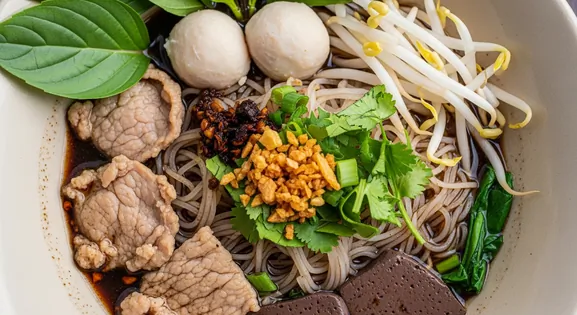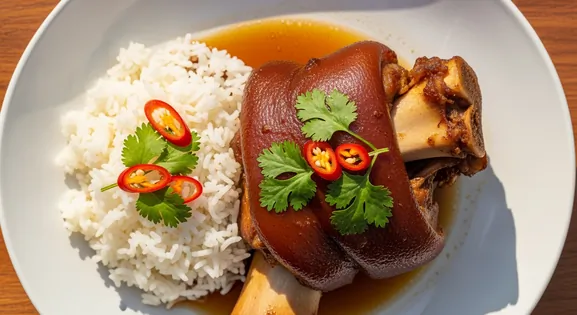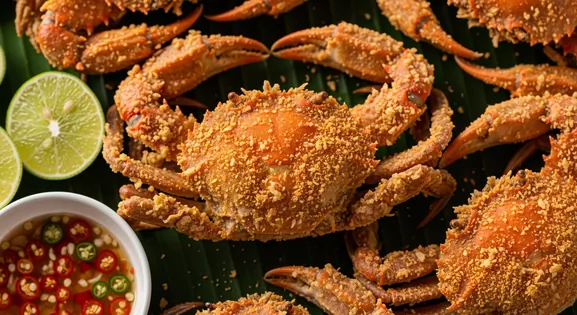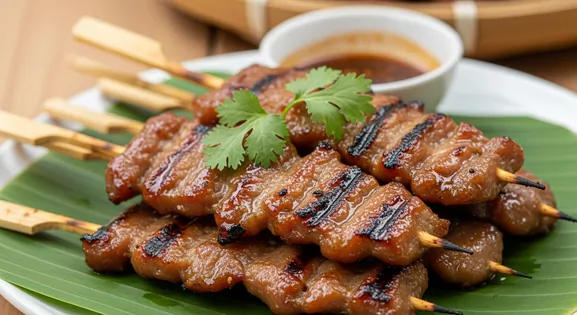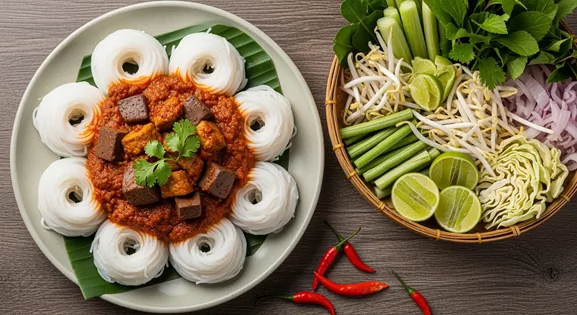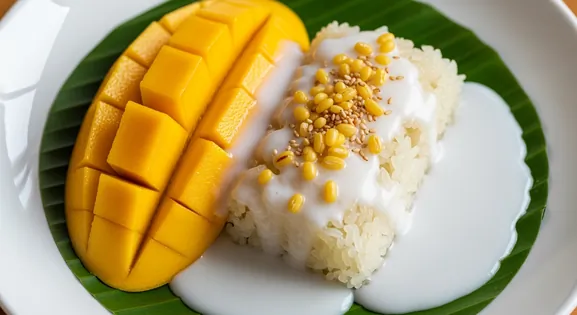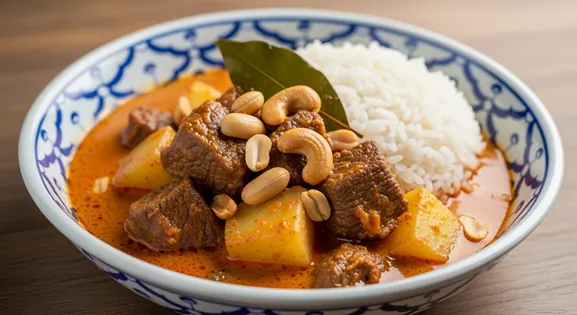Hokkien Noodles in Thailand: A Complete Food Lover's Guide
หมี่ฮกเกี้ยน (Mee Hokkien)
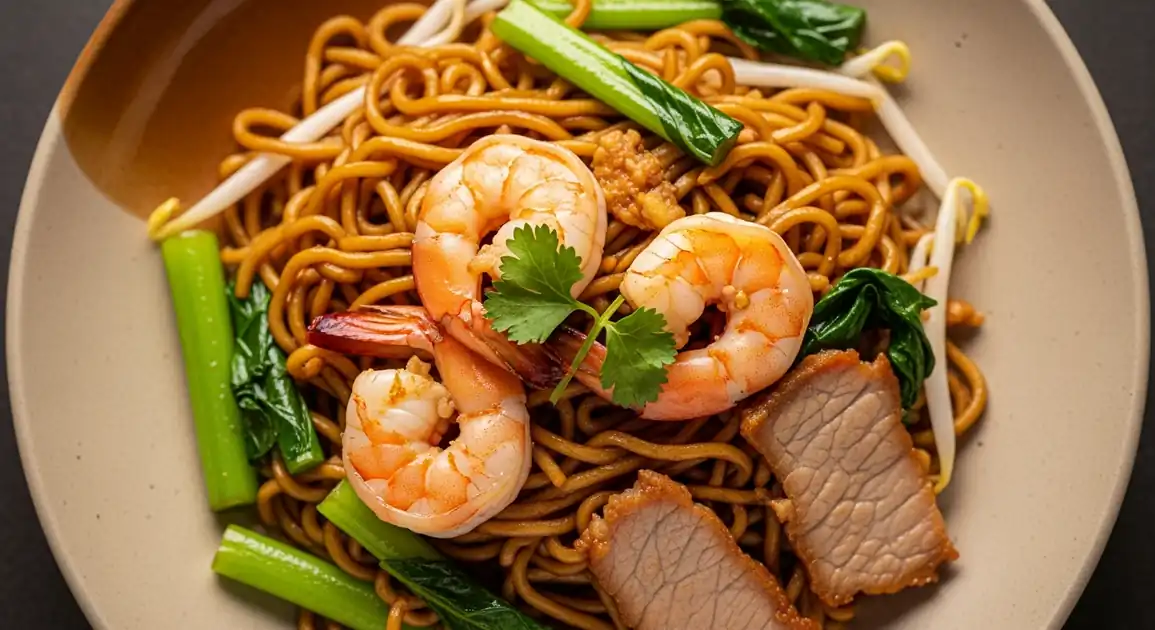
What is Hokkien Noodles?
Hokkien Noodles in Thailand (หมี่ฮกเกี้ยน or Mee Hokkien) are thick, yellow egg noodles stir-fried in a savory dark soy-based sauce with a variety of proteins and vegetables. Popular particularly in areas with strong Chinese heritage, this dish exemplifies the Chinese influence on Thai cuisine. The signature 'wok hei' (breath of the wok) gives these noodles their distinctive smoky flavor, while Thai touches like fresh seafood, local vegetables, and optional chili heat create a uniquely Thai-Chinese fusion dish.
The Story Behind the Dish
Hokkien Noodles originated from China's Fujian (Hokkien) province and were brought to Thailand by Chinese immigrants, particularly during the 19th century. In areas with significant Chinese-Thai populations descended from Hokkien miners, these noodles became integrated into the local cuisine while adopting Thai ingredients and flavors. The dish represents the cultural fusion characteristic of Peranakan or Baba-Nyonya cooking traditions found throughout parts of Southeast Asia with strong Chinese influence. Today, it's a popular street food that bridges Chinese culinary traditions with Thai flavors and cooking techniques.
Traditional Preparation Techniques
Authentic Thai Hokkien Noodles require high heat and quick cooking. Thick yellow egg noodles are briefly blanched, then stir-fried in a smoking hot wok with garlic, proteins (typically pork, prawns, squid, and/or fish cake), and vegetables like Chinese kale, cabbage, and bean sprouts. The sauce combines dark soy sauce, light soy sauce, oyster sauce, fish sauce, and sometimes a touch of sugar. Everything is tossed rapidly over extremely high heat to achieve 'wok hei' – the smoky flavor that defines quality stir-fried noodles. The dish is finished with a drizzle of sesame oil and often garnished with fried garlic, spring onions, and lime.
Key Ingredients of Hokkien Noodles
Yellow Egg Noodles (Mee Luang)
These thick, chewy wheat-based noodles are the foundation of the dish. They absorb the rich sauces and develop a slight char from the wok.
Quality indicator: Look for fresh, firm noodles that are not sticky or clumped together, indicating proper storage and quality.
Dark Soy Sauce (See Ew Dam)
A key ingredient for both color and a deep, slightly sweet umami flavor. It gives Hokkien noodles their characteristic dark hue.
Quality indicator: A good quality dark soy sauce will have a rich, viscous texture and a balanced sweet-savory profile, contributing to the dish's depth.
Pork Belly or Seafood (Moo Sam Chan / Talay)
Common protein choices, often stir-fried until tender or just cooked through. Pork adds richness, while seafood offers a fresh, briny counterpoint.
Quality indicator: For pork, look for a good fat-to-meat ratio. For seafood, ensure it's fresh, plump, and has a clean, oceanic scent.
Local Hokkien Noodles Variations in Thailand
Seafood Hokkien Noodles
Focuses on fresh seafood (prawns, squid, fish cake, mussels) rather than pork. Common in coastal areas, this variation often includes slightly different seasonings to complement the seafood.
Crispy Hokkien Noodles
Noodles are fried until crispy first, then the sauce and toppings are poured over them, creating a contrast of textures. The sauce is usually slightly thicker for this version.
Gravy Hokkien Noodles
Combines Hokkien noodles with the thick gravy style of Rad Na dishes. The noodles are cooked first, then topped with a thickened savory gravy with meat and vegetables.
Dry Hokkien Noodles
A less saucy version where the noodles are very briefly tossed with seasonings, resulting in a drier texture that highlights the 'wok hei' flavor more prominently.
Vegetarian Hokkien Noodles
Made without animal products, using mushrooms, tofu, and various vegetables for protein. Seasonings use vegetarian versions of oyster sauce and other typical ingredients.
What to Serve with This Dish
Fresh Lime Wedges
Condiment
A squeeze of fresh lime brightens the rich, savory noodles with a tangy, acidic counterpoint, cutting through the richness and enhancing the overall flavor profile.
Chili Flakes (Prik Pon)
Condiment
Dried chili flakes offer a customizable heat level, adding a fiery kick that complements the savory and slightly sweet notes of the noodles, typical of Thai street food.
A Traveler's Guide to Authenticity
What to Look For
-
Extremely hot wok with visible flames underneath
Proper high-heat cooking not only creates authentic flavor but ensures ingredients are thoroughly cooked. Look for vendors whose woks produce smoke and sizzle dramatically when ingredients are added.
-
Noodles cooked fresh to order
Vendors should be blanching fresh noodles or opening sealed packages for each order, not using pre-cooked noodles sitting out in the open.
-
Clean, organized preparation area
Ingredients should be stored properly (meats refrigerated, vegetables fresh and covered), with separate utensils for raw and cooked foods.
-
Fresh, high-quality ingredients
Seafood should look fresh (clear eyes on fish, bright red/pink prawns), vegetables should be crisp and vibrant, and oils should be clear, not dark and rancid.
-
Busy stall with high turnover
Popular vendors typically maintain fresher ingredients as they restock more frequently and nothing sits out for extended periods.
What to avoid
-
Pre-cooked noodles sitting in trays
Noodles should be cooked to order, not prepared in advance and left sitting, which can allow bacterial growth and results in poor texture.
-
Low cooking heat or excessively long cooking times
Proper Hokkien noodles cook quickly (2-3 minutes) over very high heat. Low heat or long cooking times indicate poor technique and potentially insufficient cooking temperatures for food safety.
-
Same utensils used for raw and cooked foods
Watch out for vendors using the same spatulas or chopsticks for handling raw meats and the finished dish, which can cause cross-contamination.
-
Questionable seafood quality
Avoid seafood that smells strongly, has dull coloration, or appears slimy, as these are signs of deterioration and potential food safety issues.
-
Dirty or disorganized cooking area
Cluttered, soiled preparation surfaces and unwashed utensils suggest poor hygiene practices overall.
Explore Hokkien Noodles in Detail: City Guides
Discover where to find the best Hokkien Noodles and learn local tips in these cities:
Dietary Information
Dietary Information
Important Note for Travelers: Your safety is our priority. Below are the common allergens associated with the traditional preparation of this dish. However, recipes and ingredients can vary significantly between establishments. Always confirm all ingredients directly with the food vendor before ordering, especially if you have a severe allergy.
Potential Allergens
Dietary Suitability
How to Order Hokkien Noodles
Frequently Asked Questions about Hokkien Noodles
What are Hokkien Noodles?
Hokkien Noodles (Mee Hokkien in Thai) are thick, yellow egg noodles originating from Fujian (Hokkien) province in China but popular throughout Southeast Asia including Thailand. They're stir-fried in a hot wok with a savory dark soy-based sauce, various proteins, and vegetables. The dish is characterized by its chewy texture, smoky 'wok hei' flavor, and rich umami taste.
Are Hokkien Noodles safe to eat from street vendors in Thailand?
Hokkien Noodles are generally safe from street vendors as they're cooked fresh to order at high temperatures. Look for busy stalls with high turnover where ingredients aren't sitting out. Vendors using extremely hot woks ensure good flavor and food safety. Fresh ingredients, clean areas, and proper handling are positive indicators.
Can I get vegetarian or vegan Hokkien Noodles in Thailand?
Yes, vegetarian versions ('Mee Hokkien Jay' or 'Mee Hokkien Mangsawirat') are available, especially in tourist areas. Request 'Jay' (vegan) or 'Mangsawirat' (vegetarian) when ordering. Be specific about excluding fish sauce, oyster sauce, and eggs for vegan options. Vegetable-only versions include tofu, mushrooms, and various vegetables.
What's the difference between Hokkien Noodles in Thailand versus Malaysia or Singapore?
Thai Hokkien Noodles tend to be lighter and less dark than Malaysian or Singaporean versions, often using less dark soy sauce. Thai versions frequently incorporate more seafood and Thai herbs/spices. The flavor profile often includes a balance of sweet, savory, and spicy elements typical of Thai cuisine. Malaysian/Singaporean versions might use more Chinese five-spice and have a stronger dark soy flavor.
How spicy are Hokkien Noodles in Thailand?
By default, Thai Hokkien Noodles are mildly spicy, though vendors adjust spice levels. Unlike many Thai dishes, they aren't inherently very spicy as they reflect Chinese culinary influences. They're usually served with condiment trays containing dried chili flakes, chili in vinegar, or ground chili, allowing you to adjust spiciness yourself.
Is there pork in Thai Hokkien Noodles?
Traditional Thai Hokkien Noodles often contain pork (sliced or minced) as well as pork-based ingredients like pork broth or lard for frying. However, seafood versions are equally authentic, especially in coastal areas. Vendors are usually happy to customize, so you can request 'mai sai moo' (no pork) if needed.
Expert How-To Guides about Hokkien Noodles
How to Spot a Good Hokkien Noodle Vendor in Thailand
Not all Hokkien Noodle vendors are equal. Here's how to find the most authentic and safe options.
- Look for high heat and proper wok technique - vendors using extremely hot woks with visible flames produce the best 'wok hei' (smoky flavor) and ensure thorough cooking.
- Check ingredient freshness - seafood should look vibrant, vegetables crisp, and noodles should not be pre-cooked sitting in display.
- Assess stall cleanliness - the cooking area, utensils, and ingredient storage should appear well-maintained.
- Watch for lines and high turnover - popular stalls ensure ingredients don't sit out long.
- Observe cooking time - authentic Hokkien noodles cook quickly (2-3 minutes) in a very hot wok; longer cooking suggests lower heat, which affects quality.
- Look for vendors who add noodles directly to the wok from packaging or after a quick blanch, not pre-prepared noodles.
How to Customize Your Hokkien Noodles in Thailand
Thai street food is highly customizable. Learn how to order Hokkien Noodles exactly how you like them.
- Specify protein preference - 'seafood' (talay), 'pork' (moo), 'chicken' (gai), or mixed (ruam mit).
- Request spice level - 'not spicy' (mai phet), 'a little spicy' (phet nit noi), or 'spicy' (phet).
- Ask for extra vegetables - 'more vegetables please' (khor pak mak khrap/kha).
- Request sauce adjustments - 'not too sweet' (mai waan), 'not too salty' (mai khem).
- Inquire about egg - many vendors add an optional fried or scrambled egg; specify 'with egg' (sai kai) or 'without egg' (mai sai kai).
- Customize garnishes - you can ask for extra lime (manao), cilantro (phak chee), or green onions (ton hom).
How to Eat Hokkien Noodles Like a Local
Follow these steps to enjoy your Hokkien Noodles authentically and get the best flavor experience.
- Mix thoroughly before eating - flavors and sauces are often layered; mix to distribute evenly.
- Taste before adding condiments - sample the chef's intended flavor before adjusting.
- Use the condiment tray - customize with fish sauce (nam pla), sugar, chili flakes, or vinegar with chilies.
- Combine a bit of everything in each bite - get noodles, vegetables, and protein together for complete flavor.
- Use chopsticks if comfortable, or fork and spoon (the Thai way) - push food onto your spoon with the fork.
- Finish while hot - Hokkien noodles are best immediately after cooking; they lose texture as they cool.
Our Commitment to Quality
At Tasteplorers, our mission is to provide the most accurate and useful travel information in the world. To achieve this, all content on this site is created through our unique editorial framework. We utilize leading AI research tools, guided by our proprietary prompts, and a multi-stage validation process. This entire system is overseen by our editorial team to ensure everything we publish meets our high standards for accuracy, cultural nuance, and practical value for travelers.
Learn more about our Editorial Process and our Mission.
Countries
Explore regions
Europe
Discover Europe's diverse culinary landscape, from Mediterranean flavors to hearty Alpine fare. Learn to navigate markets, decode menus, and eat like a local.
Latin America & Caribbean
Discover the vibrant cuisines of Latin America & the Caribbean. Our expert guide covers everything from Mexican street food to Peruvian ceviche and market tips.
Oceania
Explore Oceania's diverse food scene. Learn about Polynesian earth ovens, Fijian feasts, and the vibrant café culture of Australia and New Zealand.
Southeast Asia
Explore Southeast Asia's diverse food cultures from Thailand to Vietnam. Get expert tips on navigating spice levels, choosing quality vendors, and understanding the rich traditions of the region.
